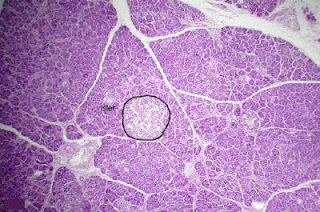Researchers have discovered new insights into the molecular mechanisms of cell proliferation in juvenile human pancreatic islets, the discovery could lead to new treatments for diabetes. In type 1 and type 2 diabetes, the insulin-producing beta cells found in cell clusters in the pancreas, known as pancreatic islets, are either destroyed or become dysfunctional, leading to insulin deficiency.
Insulin is the hormone responsible for the regulation of blood glucose levels.
Researchers took viable samples of human pancreatic islet cells obtained from both juveniles, defined as age 10 or younger, and from adults, between the age of 20 to 60 years old. The islet cells were transferred into a mouse model lacking an immune system, which allowed the human cells to survive and function for several months.
These types of human islet cells had increased rates of proliferation after transfer into the mouse model, indicating this was an intrinsic property of the juvenile islet cells and not the pancreatic environment. Beta cell growth rate declines with age. Using a drug analogue of glucagon-like peptide 1 (GLP-1), a common clinical treatment for type 2 diabetes, it was shown over a period of four weeks that beta cell proliferation was stimulated only in the juvenile islet cells, but not in the adult cells.
In comparing the islet cells, it was discovered that the GLP-1 receptors were similar in both juvenile and adult pancreatic islets, suggesting that pathways inside the human juvenile islet cells were responsible for the different response in adult islet cells.
Researchers examined the series of interactions among the molecules of a cell that lead to a specific product or change in a cell. They discovered difference in the calcineurin pathway between the juvenile islet cells and the adult islets.
haleplushearty.blogspot.com


